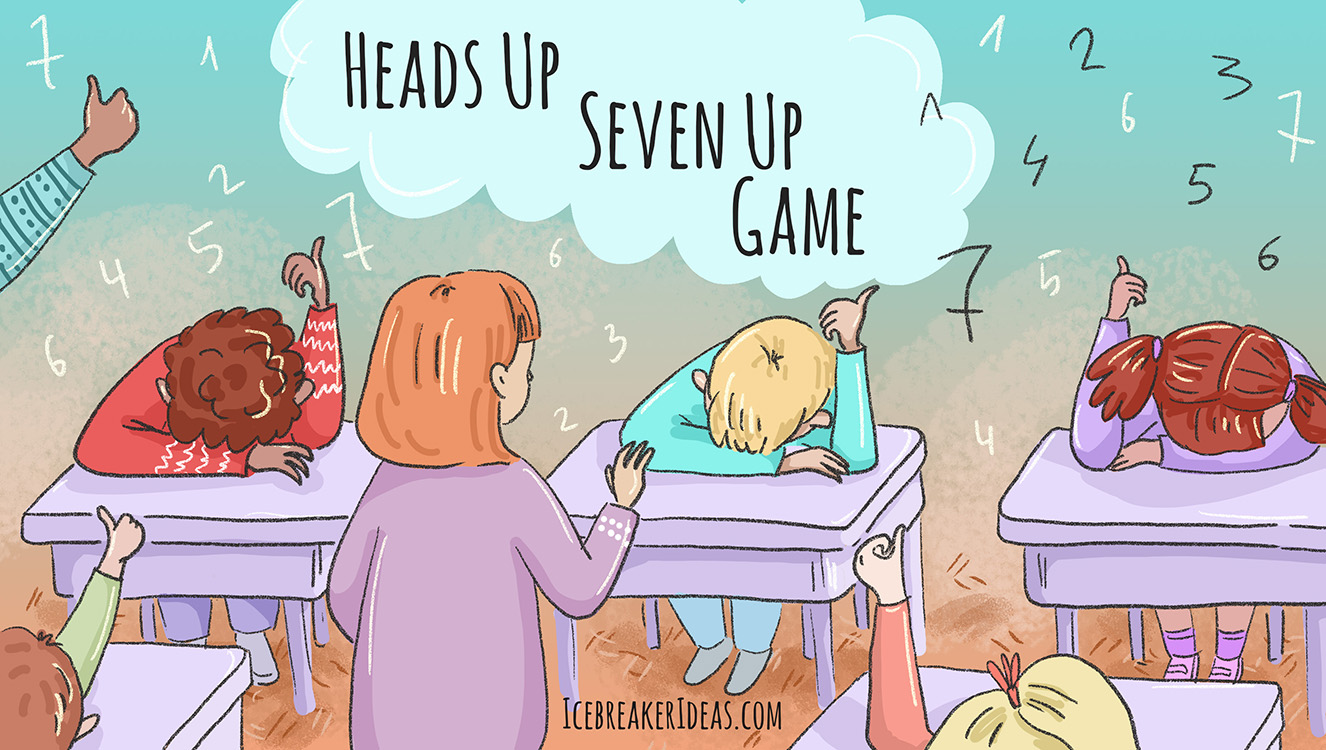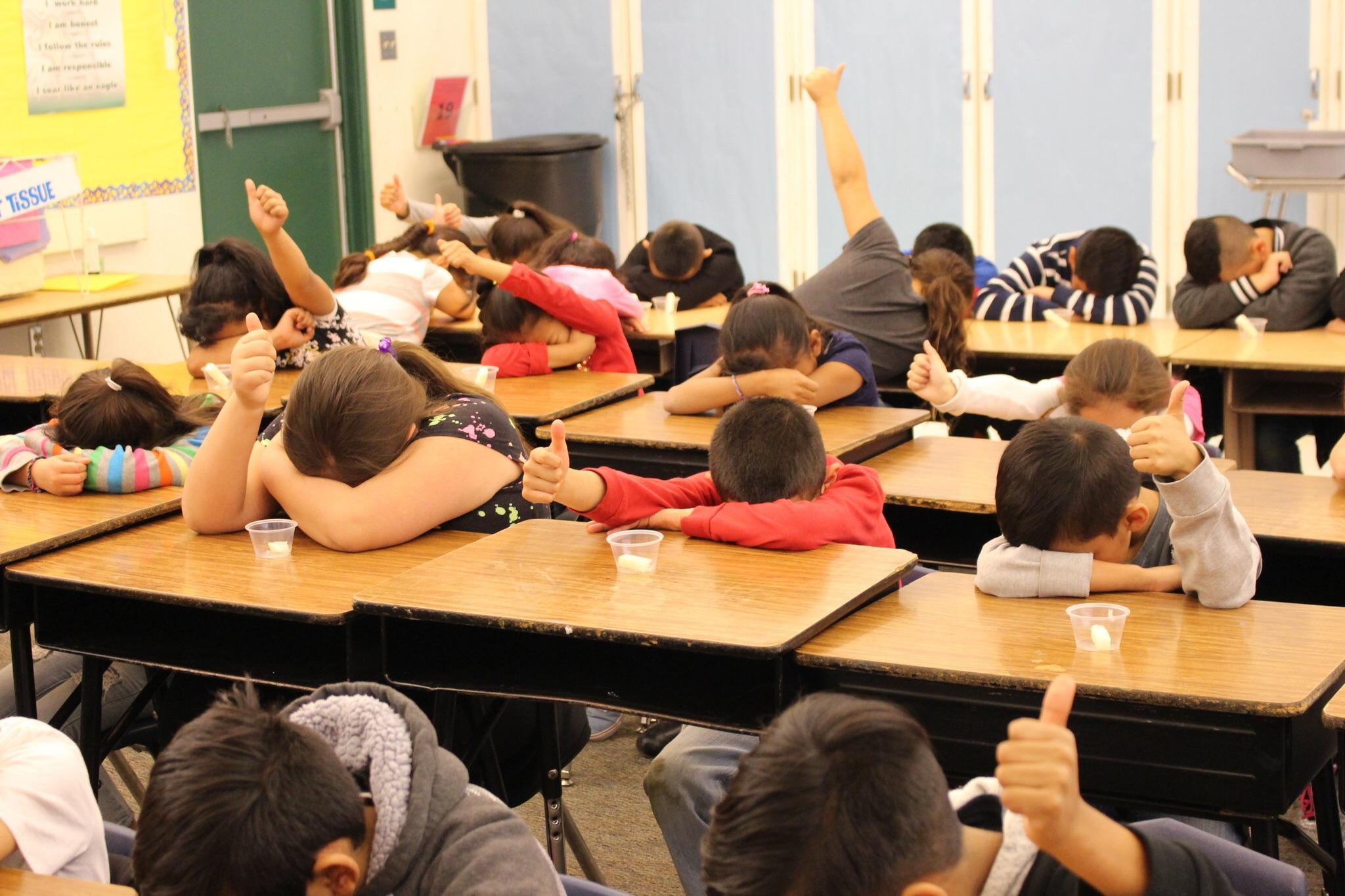How To Play Heads Up 7 Up: Full Details And Benefits

Heads up, 7 up is an amazing game to play for almost people of all ages. It is a fantastic traditional game for children. This wonderful game allows children to improve their communication and deduction skills. Besides, it is the best source of fun and entertainment as well. For instance, if you are a teacher, you can use heads up, 7 up for helping your students to learn their lessons quietly. The students will learn and review the lesson better with the help of heads up, 7 up. If you know how to teach students effectively, you can even teach them how to fix a hole in the door. Since nothing is difficult for children to learn.

Heads Up, 7 Up Game
How To Play Heads Up, 7 Up-The Best Three Methods
In this article, we tell you three effective methods to play heads up, 7 up:
Method-1 of Heads Up, 7 Up: Playing Heads Up, 7 Up
The following are the easy steps to play heads up, 7 up to under method 1:
Selecting Seven Students
Ask some of the students to stand in front of the class. These students will pick students to play heads up, 7 up. Ask all the remaining students to put their heads down with their hands stretched on the desks and their thumbs up. Then ask all the students to close their eyes and tell them that they cannot peek.
- If some students disrupt class or create trouble in focus, you can choose them first. They will participate actively in this game. Probably, they will be your helpers in heads up, 7 up.
- You can ask the students to outstretch their closed fists on the tables without thumb ups. But the important point is that their hands should be easily accessible to the pickers.
Pickers Selecting One Each Student
The pickers should walk into the classroom. Then they should tap the thumb of the student with their heads down. So when a student’s thumb is tapped, the student puts his thumb down giving a signal to the remaining pickers that he has been picked already.
- The pickers can choose the children once in around. If the students have their thumbs down to start with, they can put their thumbs up after picking.
- The pickers should move around the room silently without creating any disturbance. They do not want that the students may recognize their voices.
The Pickers Say Heads Up, 7 Up
When the pickers call the name of the game, “Heads Up, 7 Up”, the other students will lift their hands and open their eyes. Then let the picked students take turn to guess that who picked them.
- When you ask them to make a guess how picked them, it is good for their reasoning skills. They will look at all the pickers to decide who looks guilty.
- First, students will think that their friends have picked them. But they will get surprised by knowing that someone else has pocked them.
Switching The Pickers
If a student guesses correctly who has picked them, then the student will become a picker for the next round. On the contrary, if the student guesses incorrectly, then the picker who picked them will remain the picker in the next round as well. You must make sure that the pickers do not disclose whom they have selected until all the students have made their guesses.

Playing Heads Up, 7 Up in the Classroom
Method-2 of Heads Up, 7 Up: Selecting a Child To Be It
The following are the easy steps to play heads up, 7 up to under method 2:
Asking All The Students To Put Their Heads Down
You must make sure that all the students have outstretched their fists on the tables where they can easily reach. Then you should walk around in the classroom and tap one child in his hand. That child will be “it.”
- Make sure that the child you have chosen “it” does not talk after choosing them. They should not disclose their identity in front of the class.
- You as a teacher can encourage the students by saying so like “I am going to choose a student who will keep quiet and follow all the rules of the game.”
Selecting Six More Students
The student who is “it” will walk around in the classroom. Then they will tap six other students on their hands. When they pick a student, they will get up from their seat and walk to the front of the class. When all the students have been chosen, the students in front of the class will say “Heads up, 7 up!” Then all the students will lift their heads at their desks and open their eyes.
Let The Children Guess “it”
Let the children guess who “it” is Tell the children to raise their hands if they think they know the “it” student. But choose one student at one time. Let them tell you their guess. Besides, keep choosing students until some students give you the right answer.
- It will create suspense among the children when they will rule out the “it” process of elimination. Make sure to teach students how to be calm if they are overexcited. It is a part of learning.
- Moreover, you can make this game more funny and interesting by giving a reward to a student who guesses correctly. You can ask the winner to pick an item from the basket filled with tasty candies and chocolates.
Starting The Next Round
Heads up, 7 up is an interesting game. Besides, the students will want to play this game many times in the classroom. You should make sure that you give a chance to all the students to play once. Keep a track record of all the “it” students. Further, try to give as many students a chance to be “it” as possible.
- You can utilize this game as a reward for showing good behavior.
- As a teacher, you can say such things as “If everyone is good today, we will play heads up, 7 up for twenty-five minutes of the class. As a result, all the students will behave nicely since they want to participate in their favorite game.

Heads Up, 7 Up-Favorite Game of Children
Method-3 of Heads Up, 7 Up: Making The Game Educational
The following are the easy steps to play heads up, 7 up to under method 3:
Let The Students Spell a Word
You can play the normal game of heads up, 7 up. But you can ask the children to spell a word instead of identifying who picked them. If a child spells the word correctly, they will become the picker for the next round. On the contrary, if they spell incorrectly, the picker will remain the same for the next round as well.
- You should make sure that you are choosing the words that are suitable for the children’s level of education.
- Besides, ensure that you are using the same word until one of the children sells it correctly. Hence, all the children will hear the correct spelling.
- Moreover, you can write the word on the board or projector when the students have spelled it to give it a chance of review to your students.
Work on Grammar
If you are an English teacher, you can make the game more interesting and relevant by teaching the students the proper use of grammar. For instance, instead of blurting out the name, you can ask the children, “Was it, Montana?” Then Montana can reply, “Yes, it was me.”
- You can ask the children to write their guesses on the board or projector to work on their grammar.
- It will enable the students to learn how to write complete sentences, when to use capital letters, or when to use the question marks.
Solving The Math Problem
You can ask the students to answer a question about who is picked regarding the math lesson they are learning currently. If the students are learning multiplication tables, you can ask them a question like “What is six times five?” If the student answers it correctly, they will become the picker for the next round. Otherwise, ensure to review the answer to all the children in the class.
- Make sure that you are using the questions with a suitable level of difficulty. You do not want to make your students bored with so easy questions. Similarly, you do not want to discourage your students with complicated questions. Therefore, as some unique and interesting questions that are neither too easy nor too difficult.
- You can repeat the rule about the question after it is used. For instance, “What is six times five?” the answer is thirty. You can say “Remember children, when we multiply six by five, it will give us thirty.”
Asking a Science Question
You can test the knowledge of the science of your students as well. For instance, if you are teaching the periodic table to the students, you can ask, “What do the letters ‘Al’ stand for on the periodic table?” If the student answers Aluminium, choose them picker for the next round.
- You can make this game smooth by writing your question on the pieces of paper and place them in a hat. Let your children choose a question from a hat to answer when they are picked.
Summing Up How To Play Heads Up, 7 Up
Heads up, 7 up is a wonderful game for people of all ages. So if you are a teacher, you can teach many things to your students by utilizing this interesting game. Moreover, this game will improve their communication and picking abilities. They will learn how to find out the correct answer through analyzing. Furthermore, you can announce some exciting rewards to the winners of the game. You can make this game educational by teaching students the correct use of spelling and grammar. Since it is the most favorite game of the students so they will enjoy it a lot. In short, heads up, 7 up is the best opportunity for the students to learn new things interestingly.

-

 Informative3 years ago
Informative3 years ago21 Amazing Fruits That Are Not Round
-

 Science3 years ago
Science3 years agoHow To Make a Dry Ice Bomb at Home? Risks and Precautions
-

 How to3 years ago
How to3 years agoHow to Put a Tampon On: Step by Step Guide
-

 How to3 years ago
How to3 years agoHere’s How to Know When The Oil Cartridge Is Empty
-

 Informative3 years ago
Informative3 years agoElf Ear Surgery: Cost, Procedure, and Risks
-

 How to3 years ago
How to3 years agoFixed: The Torrent You Are Trying To Add is Already in The List
-

 How to3 years ago
How to3 years agoHow To Thaw Frozen Pipes Underground
-

 How to3 years ago
How to3 years agoSolved: How to Change Your Age on TikTok? (2021)